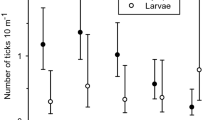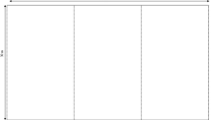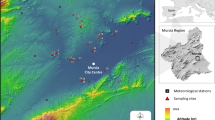Abstract
Quanttative data on host tick burdens ar fundamental for the initiation of control strategies and effective management of wildlife populations, but the methods of live sampling employed for domestic animals are unsuitable for sampling wild animals. Despite advances in the use of destructive methods (the scrub and digestion techniques) to obtain measures of the total tick burden on wildlife, these methods are too involved for many field workers, who often need only measures of relative tick burden. Recently, patch sampling methods have been introduced whereby only certain predilection sites are sampled, the presumption being that the number of ticks collected gives an indiccation of the relative degree of infestation. We examined the validity of patch sampling as a measure of relative tick burden by comparing adult ticks collected from the ears, head, neck, foreleg and perianal region of impala (aepyceros melampus) with total tick burdens of the same animals derived from the digestion technique. Adult ticks from patch sampling were positively and significantly correlated with total adults and total ticks (larvae, nymphs, and adults) on impala, with ticks patch sampled from the neck showing the highest correlation with the total tick burden. Comparison of relative tick loads from patch sampling with absolute tick loads from digestion for three classes of impala (females, bachelor males and territorial males) gave qualitatively similar results. We conclude that, when measures of relative tick load are sufficient and destructive sampling is not feasible, patch sampling can provide reliable information on relative tick burdens that are positively correlated with the total tick burden.
Similar content being viewed by others
References
Baker, M.K. and Ducasse, F.B.W. 1967. Tick infestation of livestock in Natal. I. The predilection sites and seasonal variations of cattle ticks J. S. Afr. Vet. Med. Assoc. 38: 447–453.
BMDP Statistical Software 1992. BMDP Users Digest. University of California Press, Berkeley.
Child, G. 1972. Tick infestations in hartebeest and wildebeest in poor physical condition in the Kalahari. Arnoldia (Rhodesia) 24: 1–2.
Conover, W.J. 1980. Practical Nonparametric Statistics. 2nd edn. John Wiley, New York.
Feldman, D.S., Gagnon, J., Hofmann, R. and Simpson, J. 1990. StatView II SE + Graphics. The Solutions for Data Analysis and Presentation Graphics. Abacus Concepts, Berkeley.
Hart, B.L. 1990. Behavioral adaptations to pathogens and parasites: five strategies. Neurosci. Biobehav. Rev. 14: 273–294.
Horak, I.G. 1982. Parasites of domestic and wild animals in South Africa. XV. The seasonal prevalence of ectoparasites on impala and cattle in the Northern Transvaal. Onderstepoort J. Vet. Res. 49: 85–93.
Horak, I.G., Meltzer, D.G.A. and De, Vos, V. 1982. Helminth and arthropod parasites of springbok, Antidorcas marsupialis, in the Transvaal and western Cape province. Onderstepoort J. vet. Res. 49: 7–10.
Howell, C.J., Walker, J.B. and Nevill, E.M. 1978. Ticks, mites and insects infesting domestic animals in South Africa. Part 1. Descriptios and biology. Sci. Bull. Dept. Agricult. Tech. Serv. Repub. S. Afr. 393: 1–69.
Kaiser, M.N., Sutherst, R.W. and Bourne, A.S. 1982. The relationship between ticks and zebu cattle in southern Uganda. Trop. Animal Hlth Prod. 14: 63–74.
Kaiser, M.N., Sutherst, R.W. and Bourne, A.S. 1991. Tick (Acarina: Ixodidae) infestations on zebu cattle in northern Uganda. Bull. Entomol. Res. 81: 257–262.
Lightfoot, C.J. and Norval, R.A.I. 1981. Tick problems in wildlife in Zimbabwe. 1. The effects of tick parasitism on wild ungulates. S. Afr. J. Wildl. Res. 11: 41–45.
MacIvor, K.M., Horak, I.G., Holton, K.C. and petney, T.N. 1987. A comparison of live and destructive sampling methods of determining the size of parasitic tick populations. Exp. Appl. Acarol. 3: 131–143.
MacLeod, J. and Colbo, M.H. 1976. Ecological studies of ixodid ticks (Acari, Ixodidae) in Zambia. I. Cattle as hosts of the larvae of Amblyomma variegatum (F.) and Rhipicephalus appendiculatus Neum. Bull. Entomol Res. 66: 65–74.
Mooring, M.S. 1995 The effect of tick challenge on grooming rate by impala. Animal Behav. 50: 377–392.
Mooring, M.S. and Hart, B.L. 995. Differential grooming rate and tick load of territorial male and female impale, Aepyceros melampus. Behav. Ecol. 6: 94–101.
Mooring, M.S. and Mazhowu, W. 1995. Geographic distribution of ticks and comparison of tick load on male and female impala from thress sites in Zimbabwe. Zimbabwe Vet. J., in press.
Norval, R.A.I. and Lightfoot, C.J. 1982. Tick problems in wildlife in Zimbabwe. Factors influencing the occurrence and abundance of Rhipicephalus appendiculatus. Zimbabwe Vet. J. 13: 11–20.
Norval, R.A.I., Sutherst, R.W., Kurki, Gibson, J.D. and Kerr, J.D. 1988. The effect of the brown ear-tick Rhipicephalus appendiculatus on the growth of Sanga and European breed cattle. Vet. Parasitol. 30: 149–164.
Norval, R.A.I., Sutherst, R.W., Jorgensen, O.G., Gibson, J.D. and Kerr, J.D. 1989. The effect of the bont tick (Ablyomma hebraeum) on the weight gain of Africander steers. Vet. Parasitol. 33: 329–341.
Olubayo, R.O., Jono, J., Orinda, G., Groothenhuis, J.G. and Hart, B.L. 1993. Comparative differences in densities of adult ticks as a function of body size on some East African antelopes. Afr. J. Ecol. 31: 26–34.
Pegram, R.G., Perry, B.D., Musisi, F.L. and Mwanaumo, B. 1986. Ecology and phenology of ticks in Zambia: swasonal dynamics on cattle. Exp. Appl. Acarol. 2: 25–45.
Pegram, R.G., Lemche, I., Chizyuka, H.G.B., Sutherst, R.W., Floyd, R.G., Kerr, J.D. and McCosker, P.J. 1989 Ecological aspects of cattle tick control in central Zambia. Med. Vet. Entomol. 3: 307–312.
Petney, T.N., Van, Ark, H. and Spickett, A.M. 1990. On sampling tick populations: the problem of overdispersion. Onderstepoort J. Vet. Res. 57: 123–127.
Rechav, Y. 1982. Dynamics of tick populations (Acari: Ixodidae) in the eastern Cape Province of South Africa. J. Med. Entomol. 19: 679–700.
Sachs, R. 1969. A field guide to the recording of parasitic infestation of game animals. E. Afr. Wilds. J. 7: 27–37.
Siegel, S. and Castellan, N.J. 1988. Nonparametric Statistics for the Behavioral Sciences. McGraw-hill, New York.
Sutherst, R.W., Maywald, G.F., Kerr, J.D. and Stegeman, D.A. 1983. The effect of cattle tick (Boophilus microplus) on the growth of Bos indicus x B. taurus steers. Aust. J. Agricult. Res. 34: 317–327.
Van, Dyk, P.J. and McKenzie, A.A. 1992. An evaluation of the effectivity of the scrub technique in quantitative ectoparasite ecolgy. Exp. Appl. Acarol. 15: 271–283.
Yeoman, G.H. 1966. Field vector studies of epizootic East Coast Fever. II. Seasonal studies of R. appendiculatus on bovine and non-bovine hosts in East Coast Fever enzootic, epizootic and friee areas. Bull. Epizoot. Dis. Afr. 14: 113–140.
Author information
Authors and Affiliations
Rights and permissions
About this article
Cite this article
Mooring, M.S., McKenzie, A.A. The efficiency of patch sampling for determination of relative tick burdens in comparison with total tick counts. Exp Appl Acarol 19, 533–547 (1995). https://doi.org/10.1007/BF00052923
Issue Date:
DOI: https://doi.org/10.1007/BF00052923




